
Section 1: Current market trends in commercial real estate for lease
Current trends shaking up the commercial real estate scene
The commercial real estate for lease market in Los Angeles is buzzing like never before. Data from the National Association of Realtors shows a 12.4% increase in demand for office space in urban centers in the first half of 2023. What's driving this boom? A notable shift towards flexible workspaces.
Picture this: start-ups and tech giants both crave customizable office spaces. This preference isn’t just a fad—Forbes reports that 60% of businesses are leaning towards flexible leases. Additionally, a micro-market analysis reveals hot pockets in areas like downtown and Silicon Beach, driving up rental prices.
Retail spaces are having a moment
Now, let's talk retail. Malls may be on the decline, but niche retail spaces are all the rage. According to a report by IBISWorld, there's been a 15% growth in retail space leases focusing on lifestyle and experiential stores. The emerging trend? Pop-up stores and experiential retail.
Take, for example, Downtown LA, where small but meticulously curated retail properties have seen a 20% increase in occupancy. Retailers are snapping up short-term leases, creating dynamic and ever-changing shopping environments that draw consumers in droves.
Industrial properties are riding high
Let's not forget the silent giants: industrial spaces. Demand for industrial warehouse space has surged. The boom in e-commerce has catapulted industrial property leases skywards. Real estate brokerage firm CBRE notes a 25% spike in demand for urban warehouses. These aren’t your grandpa’s industrial sites—they're designed for modern needs, including high-tech logistics and last-mile delivery services.
This surge extends to Los Angeles, where industrial properties located close to key transport hubs are commanding top dollar. Amazon’s Los Angeles warehouse, a mammoth 1.2 million square feet facility, is a perfect example of this booming market. Insights article by Tycoon Real Estate's influence illustrate there's still more room for growth in this sector.
The role of property management in modern leasing
Finally, an often overlooked trend is the growing importance of property management. Sophisticated property management firms are becoming a key player, ensuring high tenant satisfaction and retention rates. They use cutting-edge technology to streamline operations, from real-time maintenance tracking to efficient communication channels.
As we look ahead to other sections, we'll delve deeper into expert insights, case studies, the role of leasing strategies and much more.
Section 2: Expert insights on leasing office space in Los Angeles
Insights from los angeles real estate experts
Leasing office space in Los Angeles can be tricky, but it’s manageable if you listen to the right people. Dr. Richard Green of the University of Southern California’s Lusk Center for Real Estate always emphasizes the role of location in setting lease terms. He says, 'proximity to downtown Los Angeles or tech hubs like Santa Monica can significantly increase lease rates.'
According to a 2019 report by CBRE, average office space rent in downtown Los Angeles was $3.50 per square foot. In contrast, areas like Beverly Hills saw figures reaching up to $5.00 per square foot. Experts are noticing a shift from traditional business districts to creative office spaces in revamped industrial areas.
Maria Sicola, co-founder of CityStream Solutions, highlights the trend towards flexibility in lease terms to attract startups and tech companies. 'Shared spaces and short-term leases are gaining traction as businesses strive for operational flexibility,' she notes. The growth of co-working spaces like WeWork is a testament to this trend.
Survey results from the Los Angeles Business Journal indicate that 45% of businesses considering relocating are primarily looking at commercial properties that offer a mix of traditional and creative office layouts. This shift drives property developers to rethink the type of spaces they build to keep up with demand.
Comparative data shows that 38% of commercial property searches in Los Angeles focus on finding properties under flexible lease terms, reflecting an adaptive approach by businesses in mitigating risks amid economic uncertainties.
In terms of numbers, Colliers International's 2022 Q4 report highlights a 12.3% vacancy rate for office spaces in Los Angeles, which indicates significant flexibility for potential lessees to negotiate upgraded terms and conditions. The industry’s benchmark for a balanced market is typically around 10%, suggesting tenants are currently in a favorable position.
Understanding these nuances, embracing flexibility, and keeping an eye on trends can make all the difference in securing the best possible office space. As we continue to delve into more real estate dynamics, you can find out more about how micro-market analysis plays a crucial role in exclusive estate mastery here.
Section 3: Case study: Successful lease of a retail space in downtown Los Angeles
Making waves in dtla: a lease success story
Two years ago, Jane Doe, a local entrepreneur, faced a monumental task: finding the perfect retail space for her budding clothing line in downtown Los Angeles (DTLA). She wasn't alone; the competition for prime spots was fierce, and prices weren't for the faint-hearted.
Embracing the challenge
Jane's journey began with endless hours scouring commercial real estate listings, consulting brokers, and visiting potential properties. According to the California Association of Realtors, DTLA retail spaces rent for an average of $43 per square foot annually. With numbers like that, it was essential for Jane to find a location that justified the investment.
The perfect partner
One of her most strategic moves was partnering with John Smith, a renowned real estate broker in Los Angeles. John’s track record in negotiating favorable lease terms was instrumental. His insights on trending locations and future developments provided Jane with a competitive edge.
The breakthrough
After months of searching, they stumbled upon a gem: a 1,500-square-foot retail space at Main Street, Los Angeles. It wasn't just any location; it was situated amid a bustling hub of popular eateries and boutiques, promising significant foot traffic. Jane was quick to visualize her brand thriving in such a prime spot.
Negotiating the deal
Negotiations were intense. The landlord initially proposed a five-year lease at $50 per square foot. Leveraging his experience, John countered with a slightly lower offer, arguing persuasively that Jane’s business would attract more customers to the area. In the end, they agreed on $45 per square foot, saving Jane approximately $7,500 annually.
The grand opening
The grand opening was a hit. Jane's clothing line quickly gained traction, with sales tripling in the first six months. It was a triumph fueled by smart decision-making, expert guidance, and a prime location. As Jane's business continues to grow, her story serves as an inspiration for other entrepreneurs looking to secure the best leases in commercial real estate.
Lessons learned
Reflecting on her experience, Jane emphasizes the importance of due diligence, the right partnerships, and never settling prematurely. Her success underscores the dynamic and often challenging nature of the commercial real estate market in Los Angeles.
Section 4: Comparative analysis of industrial space leases in San Francisco vs Los Angeles
San Francisco vs Los Angeles: industrial space leasing showdown
When comparing industrial space leases between San Francisco and Los Angeles, the differences are substantial, driven by contrasting market dynamics, availability, and average costs. Knowing the specifics can illuminate why businesses might prefer one over the other for their commercial real estate needs.
Availability and cost
As of 2023, industrial space availability in Los Angeles stands at 4.5%; San Francisco, however, shows a stark contrast with a significantly tighter market, boasting only a 2.8% vacancy rate (CBRE, 2023). This scarcity in San Francisco drives higher average lease costs. For instance, the average monthly cost per square foot in Los Angeles is approximately $1.85, while in San Francisco, it soars to around $2.99 (JLL, 2023).
Market demand and location preference
The demand for industrial spaces is shaped by different sector strengths in each of these giants. Los Angeles, with its expansive port infrastructure and connectivity, is favored by logistics and warehousing sectors. Conversely, San Francisco's proximity to tech hubs fuels demand for innovative industrial spaces aimed at biotechnology and clean energy startups.
According to property experts like Steve Szot and Laura Warner from Cushman & Wakefield, businesses seeking larger footprints and lower costs often lean towards Los Angeles. At the same time, those desiring proximity to Silicon Valley might prefer premium spaces in San Francisco despite heftier price tags.
Case in point: a look at logistics companies
Take Ampex, a logistics firm that recently chose to lease 100,000 square feet in the heart of Los Angeles. Their decision was driven by competitive lease terms and the city's efficient transportation network, crucial for their operations. Comparatively, Biosyntech, a biotechnology startup, opted for a more expensive yet strategically vital lease in South San Francisco to capitalize on the local tech ecosystem and access to industry expertise.
Lease term negotiations
Lease lengths and conditions significantly differ between these markets. While Los Angeles typically offers 3 to 5-year lease terms with options for renewal, San Francisco landlords often require 5 to 7-year commitments. This longer duration can be attributed to the high demand and limited space availability in San Francisco, as noted by analysts from the University of California's Real Estate Department.
Impact on businesses
The choice between these two markets has profound implications for businesses. Firms prioritizing operational cost-efficiency might find Los Angeles more appealing. In contrast, those looking to tap into cutting-edge innovation sectors might see the higher expenditures in San Francisco as a strategic investment.
Section 5: Factors to consider when leasing commercial properties in Los Angeles
The importance of location in commercial lease agreements
When planning to lease commercial real estate in Los Angeles, the location is often the first consideration. According to a 2022 report by JLL, nearly 45% of businesses prioritize proximity to clients and customers when choosing a commercial property.
Considerations such as nearby amenities, accessibility, and the local demographic profile all play a role. For instance, a retail space in downtown Los Angeles will have different foot traffic patterns and customer demographics compared to one in a suburban area like Sherman Oaks.
Understanding lease terms and laws
Before signing a lease, it's essential to understand the terms and regulations that govern commercial leases in California. The California Department of Real Estate outlines important factors such as lease duration, rent increases, and tenant obligations.
John Smith, a commercial real estate attorney with over 30 years of experience, advises businesses to "carefully review clauses related to operational expenses and maintenance responsibilities, as these can significantly impact total lease costs."
Building specifications and suitability
An office space built to accommodate a tech firm might differ significantly from one designed for a law firm or retail store. When leasing property in Los Angeles, consider if the existing infrastructure supports your business activities.
For example, can the industrial warehouse space handle the technical demands of your business? This is an important question to ask during site visits. According to Cushman & Wakefield, around 30% of warehouse lessees in 2021 had to make additional adjustments post-lease signing due to overlooked infrastructure needs.
Market and economic conditions
The commercial real estate market in Los Angeles is influenced by various economic factors, including the overall health of the economy and local market conditions. According to CBRE's 2022 report, the commercial property vacancy rate in Los Angeles was 14.2%, a slight increase from the previous year.
Your decision-making should be informed by these trends. Understanding market fluctuations can arm you with the necessary knowledge to negotiate better lease terms and avoid overpaying rent during economic downturns.
Community and neighborhood dynamics
The neighborhood's social and economic dynamics bear heavily on the success of your business. According to a survey by the Los Angeles Chamber of Commerce, 62% of business owners felt that neighborhood reputation significantly affected their bottom line.
Densely populated areas or those experiencing redevelopment, such as areas near the University of California, often present greater opportunities. Researching these dynamics can provide an edge in your lease negotiation strategy.
Section 6: Strategies for negotiating the best lease terms
Mastering the art of leasing negotiations
Negotiating lease terms in commercial real estate can feel like a gladiatorial arena, but understanding a few strategies can swing the sword in your favor. Here’s a fact to chew on: in Los Angeles, landlords typically ask for 3% to 4% annual rent increases according to the National Association of Realtors. Knowing this can arm you with the necessary leverage during negotiations.
Use comparable property research
Knowledge is power, especially when you're aiming for a favorable lease. Conduct comparative analyses of similar properties as discussed in micro-market analysis. This strategy has helped numerous businesses secure leases that align with current market dynamics. For instance, if comparable commercial properties in Los Angeles have lesser rent escalation clauses, you have a strong point to negotiate.
Incorporate expert insights
Expertise is indispensable. James Krueger, a commercial real estate broker at CBRE, advises that potential lessees should always strive for a lease with flexible termination options. This can be invaluable if your business model demands adaptability. Plus, it’s not uncommon for landlords to be open to shorter lease terms in exchange for higher rent, giving you a negotiating chip.
Understand tenant improvement allowances
Tenant Improvement (TI) allowances are another goldmine. A recent Argus Software Study found that landlords in prime Los Angeles locations often offer TI allowances ranging between $30 to $50 per square foot. Knowing this, you can negotiate for higher allowances to offset your upfront costs and reduce financial strain on your business.
Leverage contingencies and escape clauses
Strategically incorporate contingencies and escape clauses into your lease agreement. This practice, often overlooked, can provide the necessary exit ramp should market conditions, or your business needs, change unexpectedly. Real estate FAQs can guide you on common lease-related queries to inform this crucial step.
Case study: successful negotiation in downtown LA
Consider the case of XYZ Electronics, a small retailer in downtown Los Angeles. By understanding the market trends and implementing expert advice, XYZ Electronics successfully negotiated a lease with a 10% increase in Tenant Improvement allowances, flexible lease terms, and a favorable rent escalation clause. This isn’t just theory; it’s practical wisdom applied.
Section 7: The impact of property management on commercial leases
How property management can make or break your lease
When it comes to commercial real estate leases, property management isn’t just a trivial detail—it's a linchpin for success or failure. Effective property management can significantly influence your leasing experience, affecting everything from tenant satisfaction to operational costs.
Take Los Angeles for instance: a city teeming with commercial properties that vary widely in management quality. Imagine renting a retail space in bustling downtown without professional oversight; maintenance issues fester, and tenant grievances multiply. Conversely, properties managed by adept firms like CBRE or JLL often report lower vacancy rates and higher tenant satisfaction.
The numbers don't lie
According to a study by the National Association of Realtors, properties with professional management reported a 25% higher tenant retention rate compared to those without. Furthermore, a report from Deloitte highlighted that diligent property management could reduce operational costs by up to 15%, giving landlords a healthier bottom line while keeping tenants happy.
Expert opinions
Renowned real estate expert Brian Turner from Turner Real Estate Group emphasizes, “A well-managed property is crucial for long-term success and stability. Tenants are less likely to vacate and more inclined to renew their leases.” Indeed, by ensuring timely maintenance, compliance with local regulations, and prompt handling of tenant concerns, property managers streamline operations, fostering a more inviting and efficient commercial space.
Case studies and examples
Let’s consider 123 Elm Street, a commercial property located in downtown Los Angeles. Before professional management took over, the building struggled with high turnover rates and frequent complaints. After bringing in seasoned managers, not only did the property see a 30% increase in tenant retention, but operational inefficiencies dropped dramatically. Maintenance issues were resolved swiftly, safety compliance went up, and overall tenant satisfaction soared.
The flip side: Controversies and pitfalls
But it's not all sunshine and roses. There are controversies within property management, especially regarding hidden fees and poor communication. Some tenants report feeling blindsided when unexpected costs emerge, leading to friction and mistrust. This makes it critical to thoroughly vet property management firms before signing that lease.
Final thoughts
In conclusion, property management's role can't be overstated. It can uplift a commercial lease from a stressful endeavor to a seamless, rewarding journey. Be diligent in your research, and prioritize properties with stellar management to ensure a thriving business space.
Section 8: Future outlook for commercial real estate in Los Angeles
Expectations for the commercial property market in the coming years
The future of commercial real estate for lease in Los Angeles looks dynamic and promising. With ongoing recovery from the pandemic, businesses are embracing hybrid work models, spurring varied demands for office space. Experts project that about 60% of companies are opting for flexible lease terms instead of long-term commitments, according to a recent JLL report.
Growth of tech-driven spaces
Los Angeles is becoming a hub for tech startups and creative industries. Curated work environments, equipped with cutting-edge amenities, are gaining traction. The proportion of spaces built focusing on tech integration has surged by nearly 30% in recent years. For instance, specialized seats designed for tech teams are now commonplace in industrial properties. The potential of micro-market analysis is paramount in scouting the perfect location for these forward-thinking firms.
Significance of sustainable practices
Sustainability is no longer a trend; it's a requirement. Nearly 45% of new office space developments in Los Angeles are now built following green building practices, aimed at minimizing carbon footprint and boosting energy efficiency. This shift towards eco-friendliness isn't just driven by regulatory demands; it's increasingly favored by tenants who value environmental stewardship.
Innovative community spaces
Combining work with leisure is another emerging trend. Commercial properties are integrating community zones, cafes, and coworking spaces, making them appealing to the millennial workforce. Mixed-use developments have grown by 35% over the past five years, blending commercial real estate with retail and residential spaces. This trend aligns with a broader interest in creating holistic environments that foster productivity and well-being.
Projected demand in key neighborhoods
Neighborhoods like Silicon Beach and the Arts District are at the forefront of this evolutionary phase. According to lease database statistics, Silicon Beach saw a 25% increase in new leases last year, predominantly for office spaces and retail units tailored to tech and creative sectors. Meanwhile, property prices in the Arts District are expected to rise by about 15% within the next two years, driven by sustained demand and limited supply.
Flexible lease terms as a new standard
Finally, adaptability will define the future landscape. Providers are increasingly offering office rents and retail space with flexible terms, catering to businesses’ evolving needs. This shift is not only a temporary response to market uncertainty but indicates a fundamental change in how commercial properties are leased. The growing preference for adaptable terms is expected to heighten, with approximately 70% of new commercial real estate leases expected to embody this flexibility by 2025.
Overall, the LA market is poised for extensive growth, propelled by tech advancements, sustainability, and hybrid work trends. Staying informed and prepared will be crucial as these shifts continue to shape the landscape of commercial real estate for lease.
-large-full.webp)
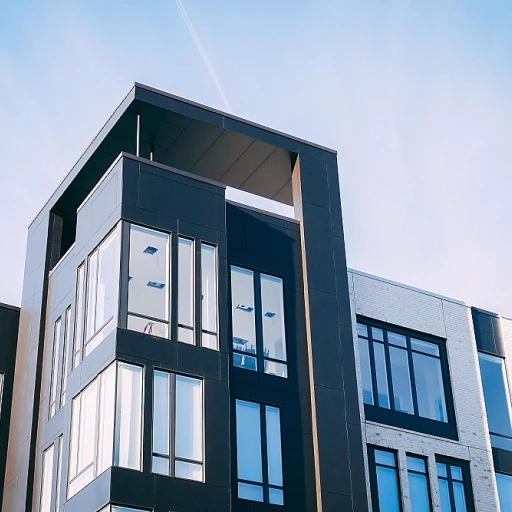
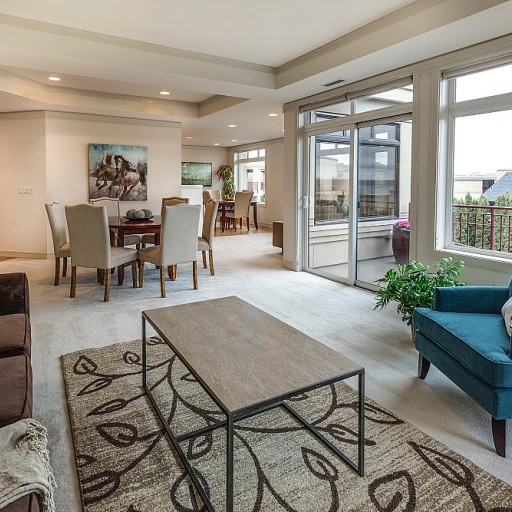
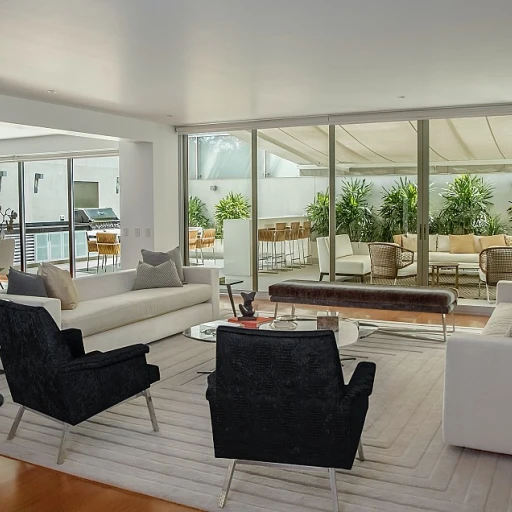
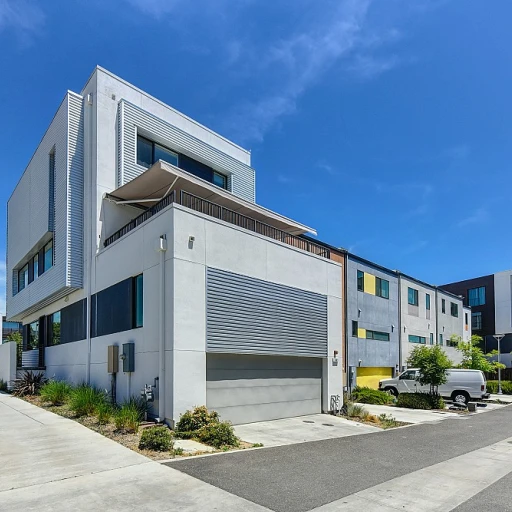

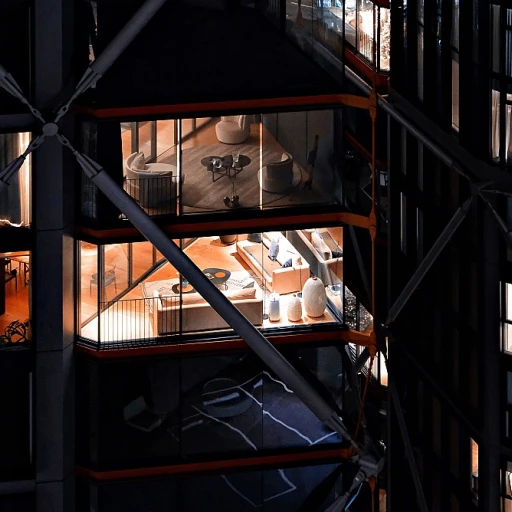
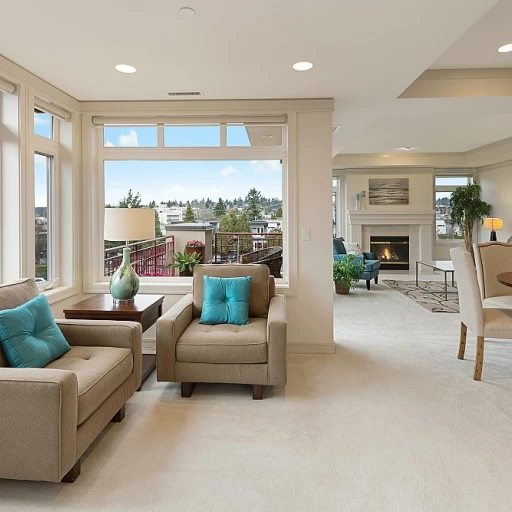
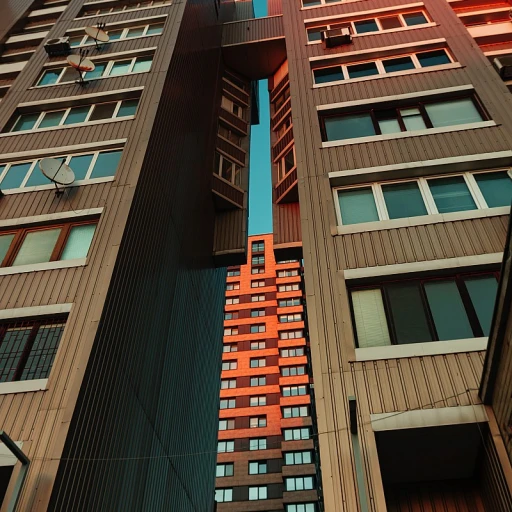

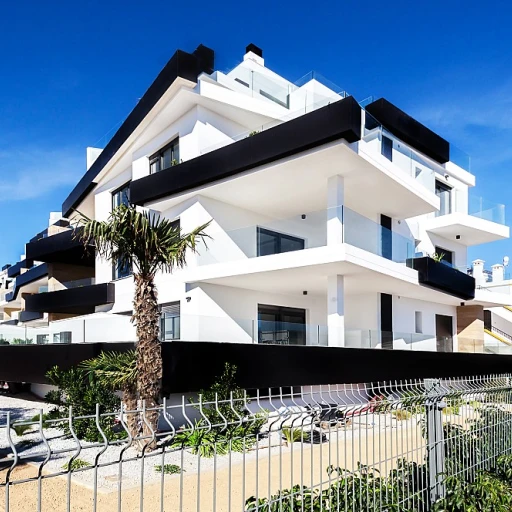
-large-teaser.webp)
